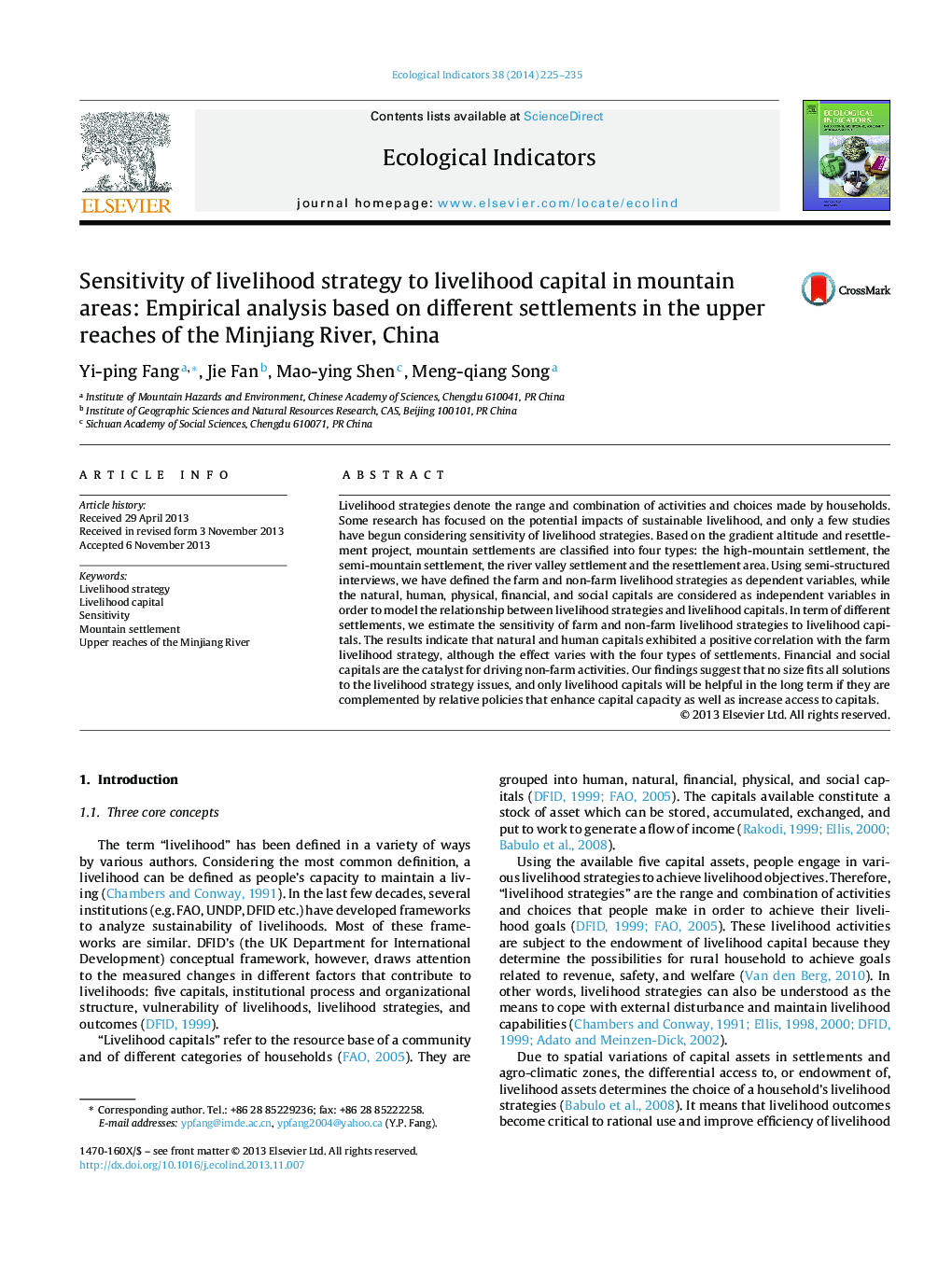| Article ID | Journal | Published Year | Pages | File Type |
|---|---|---|---|---|
| 6295193 | Ecological Indicators | 2014 | 11 Pages |
Abstract
Livelihood strategies denote the range and combination of activities and choices made by households. Some research has focused on the potential impacts of sustainable livelihood, and only a few studies have begun considering sensitivity of livelihood strategies. Based on the gradient altitude and resettlement project, mountain settlements are classified into four types: the high-mountain settlement, the semi-mountain settlement, the river valley settlement and the resettlement area. Using semi-structured interviews, we have defined the farm and non-farm livelihood strategies as dependent variables, while the natural, human, physical, financial, and social capitals are considered as independent variables in order to model the relationship between livelihood strategies and livelihood capitals. In term of different settlements, we estimate the sensitivity of farm and non-farm livelihood strategies to livelihood capitals. The results indicate that natural and human capitals exhibited a positive correlation with the farm livelihood strategy, although the effect varies with the four types of settlements. Financial and social capitals are the catalyst for driving non-farm activities. Our findings suggest that no size fits all solutions to the livelihood strategy issues, and only livelihood capitals will be helpful in the long term if they are complemented by relative policies that enhance capital capacity as well as increase access to capitals.
Keywords
Related Topics
Life Sciences
Agricultural and Biological Sciences
Ecology, Evolution, Behavior and Systematics
Authors
Yi-ping Fang, Jie Fan, Mao-ying Shen, Meng-qiang Song,
